Welcome to the captivating world of Ancient Greek heroes and their extraordinary adventures. These legendary figures, whose tales have been passed down through generations, continue to captivate our imagination with their bravery, strength, and cunning. From the mighty Heracles and his twelve labours to the valiant Perseus and his epic battles against mythical creatures, each hero has left an indelible mark on Greek mythology. Join us as we delve into the fascinating lives and accomplishments of these heroes, uncovering their origins, exploring their greatest achievements, and unraveling the mysteries that surround their captivating journeys. Brace yourself for a journey into the realm of gods, monsters, and the timeless spirit of heroism.
Contents
- Heracles
- Perseus
- Theseus
- Achilles
- Conclusion
-
Frequently Asked Questions
- 1. Who is considered the greatest hero in Greek mythology?
- 2. What were the Twelve Labours of Heracles?
- 3. How did Perseus defeat Medusa?
- 4. What heroic feat is Theseus known for?
- 5. What was Achilles’ prophecy?
- 6. How did Achilles meet his tragic destiny?
- 7. What was the significance of Heracles’ lion skin?
- 8. What made Perseus a legendary hero?
- 9. How did Theseus escape the labyrinth?
- 10. What role did Achilles play in the Trojan War?
- References
-
Frequently Asked Questions
- FAQs about Ancient Greek Heroes
- 1. Who were the ancient Greek heroes?
- 2. How did Heracles become a hero?
- 3. What were the twelve labours of Heracles?
- 4. What other feats did Heracles accomplish?
- 5. What is the legend of Perseus?
- 6. How did Perseus defeat Medusa?
- 7. What was Perseus’ role in rescuing Andromeda?
- 8. What was the Minotaur’s Labyrinth?
- 9. How did Theseus slay the Minotaur?
- 10. What were some of Achilles’ feats and his tragic destiny?
- References
- Read More
Heracles
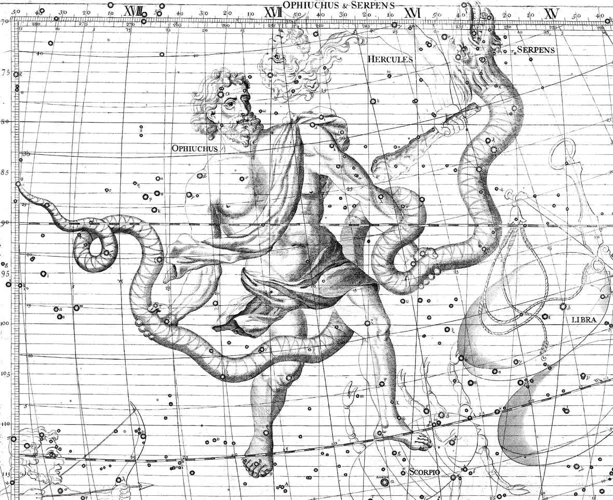
Heracles, also known as Hercules, is one of the most renowned and celebrated heroes of Ancient Greece. He was born to Alcmene, a mortal woman, and Zeus, the king of the gods. His extraordinary strength and courage were evident from a young age when he strangled two serpents sent by the jealous goddess Hera to kill him. The Twelve Labours of Heracles, assigned to him as punishment for killing his wife and children in a fit of madness induced by Hera, are legendary tales of valor and endurance. These labours included slaying the Nemean lion, capturing the Erymanthian Boar, and defeating the nine-headed Lernaean Hydra. Heracles also embarked on numerous other quests and adventures, such as obtaining the Golden Apples of Hesperides and freeing Prometheus from his eternal torment. Despite facing numerous trials and enduring much suffering, Heracles emerged as the epitome of heroism, displaying unmatched strength, resilience, and a determination that was unrivaled. His exploits have inspired countless generations and continue to be revered as a testament to the indomitable spirit of the human will. (Link: /life-cycle-star-nebula-nebula/)
Origins of Heracles
The origins of Heracles are shrouded in myth and divine intervention. According to legend, Heracles was the son of Alcmene, a mortal woman, and Zeus, the king of the gods. Zeus, known for his numerous affairs with mortals, disguised himself as Alcmene’s husband, Amphitryon, and conceived Heracles. This act of deception played a crucial role in Heracles’ birth and marked him as a demigod, possessing both mortal and divine attributes. His divine lineage bestowed upon him unparalleled strength and abilities, making him a force to be reckoned with. However, his connection to Zeus and his divine nature also drew the ire of Hera, Zeus’ wife and the goddess of marriage and childbirth. Hera, consumed by jealousy and a fierce desire to punish Heracles, orchestrated a series of events that would plague him throughout his life. From the moment of his birth, Heracles was marked for a life filled with extraordinary challenges and trials, all because of his divine origins. His parentage made him a central figure in the ongoing conflict between the gods and their mortal offspring, shaping his destiny as a hero of mythic proportions. (Link: /nature-in-native-american-mythology/)
Twelve Labours of Heracles
The Twelve Labours of Heracles are an epic series of tasks that he was tasked with as punishment for his unfortunate act of killing his wife and children. Each labour was more challenging than the last, testing Heracles’ strength, cunning, and perseverance. These labours include:
1. Slaying the Nemean Lion: Heracles had to kill the ferocious, invulnerable lion that terrorized the region of Nemea. Strangling the lion with his bare hands, Heracles emerged victorious.
2. Killing the Lernaean Hydra: This terrifying monster had multiple heads, and for every head Heracles cut off, two would grow back. With the help of his nephew Iolaus, Heracles managed to defeat the Hydra by cauterizing the stumps of the severed heads to prevent them from regrowing.
3. Capturing the Golden Hind of Artemis: Heracles was tasked with capturing a golden-horned deer that was sacred to the goddess Artemis. Despite its speed and agility, Heracles managed to catch the elusive deer.
4. Capturing the Erymanthian Boar: Heracles was sent to capture a massive boar that was terrorizing the region of Erymanthia. He successfully captured the boar by trapping it in a net.
5. Cleaning the Augean Stables: Heracles was assigned the grueling task of cleaning the massive stables belonging to King Augeas, which had not been cleaned in years. Using his wit, Heracles redirected two rivers to wash away the filth in a single day.
6. Slaying the Stymphalian Birds: These man-eating birds with sharp metallic feathers posed a great danger to the people of Stymphalia. Heracles used his formidable bow and arrows to shoot down the birds and drive them away.
7. Capturing the Cretan Bull: Heracles was ordered to capture a wild bull that was wreaking havoc on the island of Crete. With his strength, he wrestled the bull into submission and brought it back to King Eurystheus.
8. Capturing the Mares of Diomedes: These vicious man-eating horses needed to be tamed and brought under control. Heracles managed to subdue them by using their own strength against them and feeding them their own master, Diomedes.
9. Obtaining the Belt of Hippolyta: Heracles was sent to retrieve the magical girdle of the Amazon queen, Hippolyta. Though the task proved challenging, Heracles ultimately succeeded in obtaining the precious belt.
10. Obtaining the Cattle of the Monster Geryon: Heracles embarked on a monumental journey to the far west and fought against the giant three-bodied Geryon. With his mighty arrows, he triumphed over the creature and took control of the prized cattle.
11. Stealing the Apples of the Hesperides: The Hesperides guarded the golden apples, which bestowed immortality. To complete this task, Heracles sought out Atlas, who held up the heavens, and took his place temporarily, allowing Atlas to retrieve the apples for him.
12. Capturing Cerberus: Arguably the most difficult task of all, Heracles descended into the depths of the underworld and managed to wrestle the three-headed dog, Cerberus, into submission, bringing him back to the mortal world.
These twelve labours demonstrate Heracles’ exceptional strength, bravery, and determination, solidifying his status as one of the greatest heroes in Greek mythology. (Link: /meteor-shower-naming/)
Other Feats and Achievements
Other Feats and Achievements of Heracles were as numerous and impressive as his renowned Twelve Labours. One of his notable feats was the successful retrieval of the girdle of Hippolyta, the queen of the Amazons. This task required Heracles to venture into the land of the Amazon warriors and convince Hippolyta to willingly part with her prized possession. Another significant achievement was the slaying of the monstrous birds known as the Stymphalian birds. These fierce creatures had sharp metallic feathers and were terrorizing the region of Lake Stymphalus. Heracles, displaying his exceptional archery skills, managed to slay them all and restore peace to the area. Additionally, he played a pivotal role in the Argonauts’ quest for the Golden Fleece, helping the crew navigate treacherous waters and overcome formidable challenges. Heracles also rescued the musician Orpheus from Hades, proving his bravery even in the realm of the dead. These incredible feats, along with his unwavering determination and unparalleled strength, solidified Heracles’ status as one of the greatest heroes in Greek mythology.
Perseus
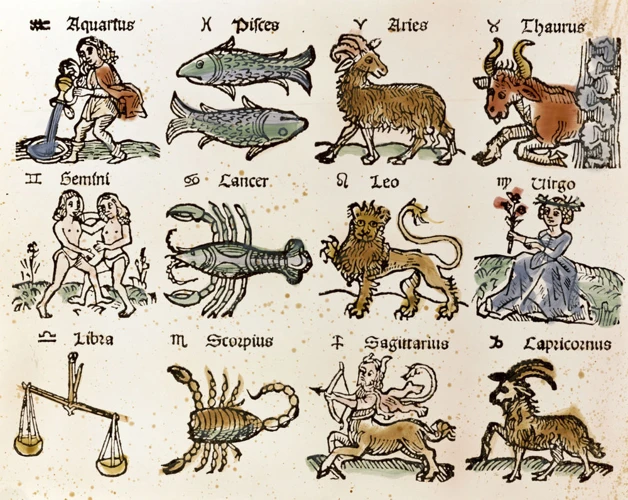
The legendary hero Perseus is known for his daring adventures and encounters with fearsome creatures in Greek mythology. Born to Danaë, a mortal princess, and Zeus, the king of the gods, Perseus faced numerous trials from the beginning of his life. One of his most famous feats was the slaying of the dreaded Gorgon Medusa. Armed with a mirrored shield and a sword gifted to him by the gods, Perseus was able to decapitate Medusa, turning her snake-covered head into a powerful weapon. This remarkable victory not only showcased his courage but also marked his triumph over evil. In another heroic quest, Perseus embarked on a mission to rescue the princess Andromeda from a sea monster sent by Poseidon as punishment. With the help of the winged sandals from Hermes and the head of Medusa, Perseus saved Andromeda and earned her hand in marriage. Perseus’s endeavors reflect his incredible resourcefulness, quick thinking, and strategic prowess, solidifying his legacy as one of the most revered heroes of Greek mythology. (Link: /meteor-shower-naming/)
Legend of Perseus
The Legend of Perseus is an enthralling tale that has captivated audiences for centuries. Perseus, the son of Zeus and Danae, embarked on a remarkable journey filled with mythological creatures and daunting challenges. His adventures began with the quest to slay Medusa, the Gorgon whose gaze turned people to stone. Equipped with a mirrored shield, a sickle-shaped sword, and the winged sandals of Hermes, Perseus successfully defeated Medusa and severed her head, which possessed the power to petrify any living being. This triumphant feat led to the rescue of Princess Andromeda, who was chained to a rock as a sacrifice to a sea monster. Perseus valiantly battled and slew the creature, freeing Andromeda and winning her hand in marriage. The tale of Perseus showcases his resourcefulness, bravery, and divine lineage, making him a heroic figure revered throughout Greek mythology. (Link: /nature-in-native-american-mythology/)
Defeating Medusa
Defeating Medusa was one of Perseus’ most famous and challenging feats. Medusa was a monstrous creature with snakes for hair and a gaze that could turn anyone to stone. Perseus, armed with a mirror shield from Athena and a pair of winged sandals from Hermes, embarked on his perilous quest to slay Medusa. With the aid of the gods, Perseus cleverly used his reflection in the shield to avoid Medusa’s deadly gaze. He approached her slowly, ensuring that he maintained eye contact only through the reflection. With one swift stroke of his sword, he decapitated the fearsome Medusa, ending her reign of terror. Perseus’ resourcefulness, bravery, and divine assistance were key to his victory. It is said that from Medusa’s severed neck, two powerful offspring emerged – the winged horse Pegasus and the giant Chrysaor. This epic battle against Medusa demonstrated Perseus’ cunning and determination in the face of insurmountable odds, securing his place among the most revered heroes of Ancient Greece.
Rescuing Andromeda
In the exciting tale of Perseus, one of the most valiant ancient Greek heroes, the daring rescue of Andromeda stands out as a remarkable feat. Andromeda, the daughter of King Cepheus and Queen Cassiopeia, had been bound to a rock as a sacrifice to appease the wrath of the sea god Poseidon. Perseus, armed with his trusty winged sandals, invisible helm, and Medusa’s deadly severed head, came to her aid. Medusa’s gaze could turn anyone to stone, and Perseus cleverly used this power to defeat the sea monster, Cetus, sent to devour Andromeda. With a swift stroke of his sword, Perseus cut off the monstrous head, turning Cetus into stone and thus saving Andromeda from her terrifying fate. This act of heroism not only rescued Andromeda but also united her with Perseus, as they later married and lived a life of love and adventure together. The story of Perseus rescuing Andromeda serves as a testament to bravery and love conquering all obstacles, inspiring generations to believe in the power of courage and compassion.
Theseus
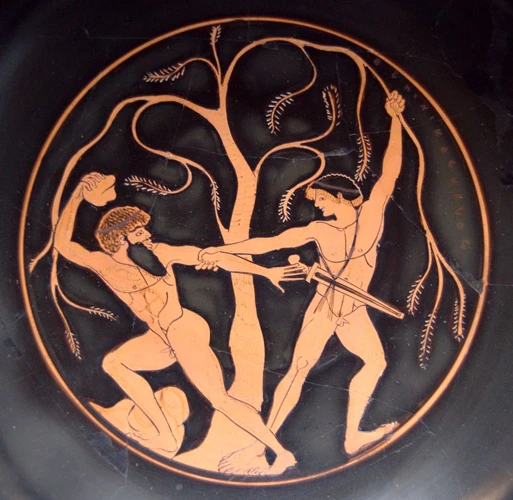
Theseus, a hero of Ancient Greek mythology, is best known for his legendary quest in the labyrinth of the fearsome Minotaur. As the son of Aegeus, the king of Athens, and Aethra, a mortal woman, Theseus was destined for greatness. The Minotaur’s Labyrinth, a treacherous maze designed by King Minos of Crete, served as the setting for Theseus’ heroic feat. With the help of Ariadne, the daughter of King Minos, Theseus navigated the labyrinth, slaying the monstrous Minotaur using his wits and strength. This triumph not only saved the people of Athens from the annual sacrifice to the Minotaur but also showcased Theseus’ extraordinary bravery and resourcefulness. Throughout his life, Theseus continued to demonstrate his heroism by undertaking various other quests and accomplishments. These included the slaying of the Crommyonian Sow and the Procrustean Bandit, as well as his involvement in the Calydonian Boar Hunt. Theseus’ exploits not only solidified his place as a legendary hero but also embodied the virtues of courage, cunning, and perseverance. (Link: /nature-in-native-american-mythology/)
The Minotaur’s Labyrinth
The Minotaur’s Labyrinth is a legendary maze located on the island of Crete. This intricate and bewildering structure was created by King Minos to confine the monstrous Minotaur, a half-human, half-bull creature that terrorized the land. The labyrinth was designed by the renowned architect Daedalus, with its corridors twisting and turning in a seemingly endless maze. It was said to be virtually impossible to navigate without a guide. The labyrinth became a fearsome place, with rumors of those who dared to enter never returning. The very thought of the Minotaur lurking within its walls struck fear into the hearts of the people. The Minotaur’s Labyrinth stands as a symbol of both the power and cruelty of King Minos, as well as the desperate plight faced by the Athenians who were forced to send tributes of young men and women to be sacrificed to the Minotaur every nine years. This dark and treacherous place played a significant role in the tale of Theseus, who set out on a mission to slay the Minotaur and bring an end to this horrific tradition. (Link: /meteor-shower-naming/)
Slayer of the Minotaur
The Slayer of the Minotaur refers to the heroic deeds of Theseus, the legendary Greek hero. According to myth, the Minotaur was a monstrous creature, half-human and half-bull, who resided in the intricate Labyrinth on the island of Crete. Theseus, determined to rid the world of this terrifying beast, volunteered to be one of the youths sent as a sacrifice to the Minotaur. Armed with his wit and strength, Theseus descended into the labyrinth, equipped with a ball of thread given to him by Princess Ariadne. This thread would serve as his lifeline, allowing him to retrace his steps and find his way out of the labyrinth after defeating the Minotaur. Theseus successfully navigated the treacherous maze and confronted the Minotaur in a dramatic battle. With his trusty sword in hand, Theseus dealt a fatal blow to the fearsome creature, ending its reign of terror once and for all. The victory of Theseus over the Minotaur not only showcased his bravery and cleverness but also symbolized the triumph of humanity over monstrous forces. It remains one of the most famous and celebrated feats in Greek mythology, immortalizing Theseus as a legendary hero.
Other Heroic Exploits
Other Heroic Exploits:
1. Taming the Mares of Diomedes: These flesh-eating horses posed a significant threat to the people of Thrace. Theseus successfully captured the mares and brought them back to King Eurystheus as one of his labours. This display of bravery showcased his skill in taming wild beasts.
2. Journey to the Underworld: Theseus ventured into the realm of Hades to rescue his friend Pirithous, who had been captured while attempting to abduct Persephone, the queen of the Underworld. Despite the dangers and obstacles he faced, Theseus demonstrated his resourcefulness and determination in navigating the treacherous realm of the dead.
3. Defeating the Amazonian Queen: Theseus fought alongside the Greek army against the fierce warriors known as the Amazons. In the battle, he confronted their queen, Hippolyta, and emerged victorious, earning himself great honor as a skilled warrior and a symbol of Greek heroism.
4. Taking the Marathonian Bull: Theseus captured a massive bull that was ravaging the region of Marathon. This feat showcased his brute strength, as he successfully overpowered the powerful beast and brought it back to King Eurystheus.
5. Establishing Democracy: Theseus is also credited with laying the foundations of democracy in Athens. He introduced reforms, such as the establishment of a council of citizens, and played a crucial role in creating a fair and just society.
These additional heroic exploits of Theseus further solidify his reputation as an iconic figure in Greek mythology and demonstrate his versatility as a hero. From confronting legendary creatures to undertaking daring rescue missions and contributing to societal advancements, Theseus embodies the ideals of courage, leadership, and civic duty.
Achilles
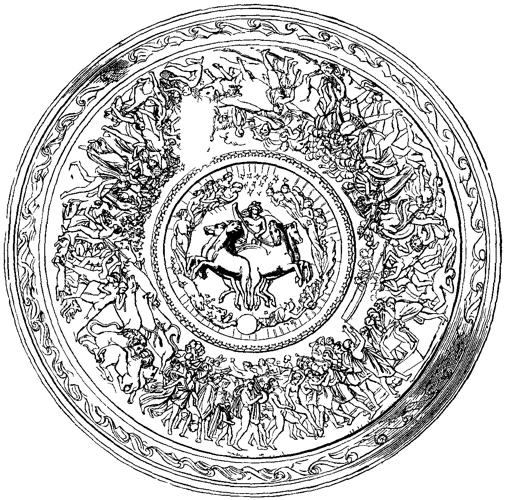
Achilles, the mighty hero of the Trojan War, was born to the sea nymph Thetis and the mortal Peleus. With his godlike strength and invulnerability, Achilles quickly became an indomitable force on the battlefield. However, his path to glory was marred by a tragic prophecy that foretold his early death. To prevent this, his mother dipped him in the River Styx, making him invulnerable except for his heel, which was left untouched. As the Trojan War raged on, Achilles played a pivotal role, leading the Myrmidons to countless victories. His most notable feat was slaying the Trojan prince Hector, a pivotal moment that turned the tide of the war. But his tragic destiny was sealed during the war when Paris, guided by the god Apollo, shot an arrow that struck Achilles’ vulnerable heel, leading to his demise. Despite his untimely death, Achilles’ name lives on as a symbol of unmatched bravery and a reminder of the fragility of human existence. (Link: /meteor-shower-naming/)
Birth and Prophecy
The birth and prophecy surrounding Achilles make for a fascinating tale in Greek mythology. Achilles was born to Thetis, a sea nymph, and Peleus, a mortal king. The circumstances of his birth were extraordinary, as Thetis attempted to make him invulnerable by dipping him in the River Styx, holding him by his heel. This immortalized his body, except for the heel by which he was held. This vulnerable heel would later become infamous as Achilles’ “Achilles’ heel,” a crucial weakness.
But it wasn’t just his physical invulnerability that made Achilles special. Even before his birth, there were prophecies foretelling his destiny. One such prophecy claimed that Achilles would have a choice – to live a long, ordinary life or to die young but achieve everlasting glory in battle. Thetis, fearing for her son’s safety, disguised Achilles as a girl and raised him among the women of the court of King Lycomedes.
However, Achilles’ disguise couldn’t last forever. When the Trojan War was imminent, Odysseus, the crafty Greek hero, came to unmask Achilles. He presented an array of weapons and, unable to resist their allure, Achilles revealed himself as a warrior by reaching for a spear and shield.
The prophecy had been fulfilled, and Achilles embarked on a path that would lead him to become one of the greatest heroes of the Trojan War. His birth and the prophecies surrounding him set the stage for a saga of courage, honor, and tragic destiny that would reverberate through the pages of history.
Troy and the Trojan War
Troy and the Trojan War mark a pivotal chapter in the ancient Greek hero Achilles’ life and the annals of Greek mythology. The Trojan War was sparked by the abduction of Helen, the wife of Menelaus, by Paris, a prince of Troy. In response, the Greeks, led by Agamemnon, assembled a formidable fleet and set sail for Troy. Achilles, known as the mightiest warrior among the Greeks, played a significant role in the war. However, his involvement was not without its conflicts and hardships. One of the most notable events was his feud with Agamemnon, which led Achilles to withdraw from the battlefield, causing the Greeks to suffer heavy losses. Achilles’ dear friend Patroclus donned his armor and fought in his stead but was ultimately slain by Hector, the Trojan prince. Consumed by grief and seeking revenge, Achilles returned to the battle with newfound ferocity, slaying Hector and dragging his lifeless body around the walls of Troy. This act of savagery punctuated the intense rivalry between Achilles and Hector as well as highlighted the tragedy and brutality of war. The war eventually came to an end when the Greeks devised the ruse of the Trojan Horse, a cunning tactic that led to the fall of Troy. The Trojan War stands as a symbol of epic conflict, heroism, and sacrifice, forever etched in the annals of Greek mythology. (Link: /life-cycle-star-nebula-nebula/)
Achilles’ Feats and Tragic Destiny
Achilles, the mighty hero of the Trojan War, was known for his incredible feats in battle, as well as his tragic destiny. Renowned for his unmatched strength, bravery, and skill as a warrior, Achilles was the central figure in Homer’s epic poem, the Iliad. One of his most notable achievements was his victory over the river god, Scamander, during the Trojan War. The river god attempted to drown him, but Achilles, with his supreme fighting abilities, managed to overcome this formidable opponent.
Another notable feat of Achilles was his slaying of the Trojan prince Hector, the champion of the Trojan army. In a poignant and emotionally charged encounter, Achilles avenged the death of his dear friend, Patroclus, by engaging Hector in single combat and ultimately killing him. This act solidified Achilles’ reputation as an indomitable warrior and marked a turning point in the Trojan War.
However, despite his immense prowess, Achilles was plagued by a tragic destiny. According to prophecy, he had two paths to choose from: a long, peaceful life or a short, glorious life filled with heroism. Achilles chose the latter, knowing that his name would be forever remembered in the annals of history. Yet, this choice eventually led to his downfall. Paris, with the help of Apollo, shot an arrow into Achilles’ vulnerable heel, his only weak spot, leading to his untimely demise.
The tragic fate of Achilles was magnified by the grief of those who loved him, particularly his close companion, Patroclus, and his mother, Thetis. In the end, his feats in battle and his tragic destiny cemented his place as one of the greatest heroes in Greek mythology. Achilles’ story serves as a reminder of the complexities of heroism and the fleeting nature of glory. (Link: /meteor-shower-naming/)
Conclusion
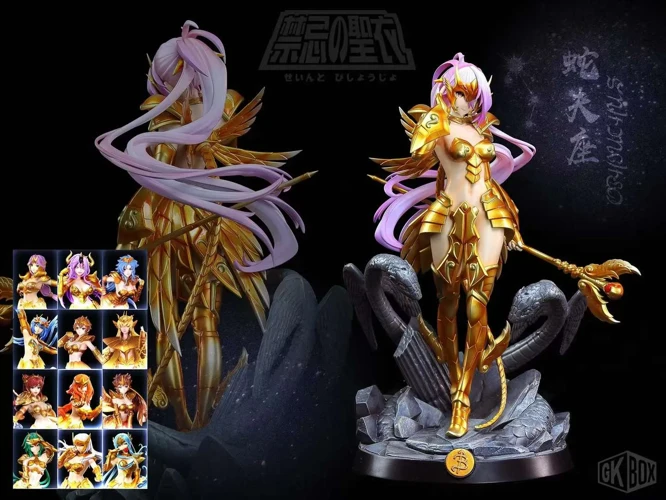
In conclusion, the ancient Greek heroes, including Heracles, Perseus, Theseus, and Achilles, have left an indelible mark on our collective imagination. Their adventures and accomplishments have become iconic symbols of bravery, courage, and triumph over adversity. Through their stories, we glimpse into a world filled with gods, goddesses, and mythical creatures, where heroes rise above their mortal limitations to achieve greatness. These tales serve as reminders of the potential within each of us to overcome challenges, face our fears, and strive for excellence. The legacy of these heroes continues to inspire and resonate with us, transcending time and cultural barriers. Whether it is Heracles’ twelve labours, Perseus’ defeat of Medusa, Theseus’ slaying of the Minotaur, or Achilles’ feats in the Trojan War, their stories have become woven into the tapestry of our human history, teaching us valuable lessons about bravery, sacrifice, and the pursuit of glory. As we reflect on the incredible adventures and accomplishments of these ancient Greek heroes, let us carry their spirit and determination within us, endeavoring to live our lives with the same sense of purpose, resilience, and heroism.
Frequently Asked Questions

1. Who is considered the greatest hero in Greek mythology?
Heracles, also known as Hercules, is often regarded as the greatest hero in Greek mythology. His incredible strength, bravery, and numerous accomplishments make him a legendary figure among the Greek pantheon.
2. What were the Twelve Labours of Heracles?
The Twelve Labours were a series of tasks assigned to Heracles as penance for killing his wife and children. These labours included slaying mythical beasts like the Nemean lion and the Hydra, capturing the Golden Hind, and retrieving the apples of the Hesperides.
3. How did Perseus defeat Medusa?
Perseus used a mirrored shield and a pair of winged sandals to approach Medusa without looking directly at her, as her gaze turned people into stone. With careful strategy, Perseus managed to decapitate Medusa while avoiding eye contact.
4. What heroic feat is Theseus known for?
Theseus is renowned for his slaying of the Minotaur, a half-man, half-bull creature that dwelled in the labyrinth of Knossos. With the help of Princess Ariadne, Theseus successfully navigated the labyrinth and defeated the Minotaur.
5. What was Achilles’ prophecy?
Achilles’ prophecy predicted that he would die in battle, but his name would live on forever. This prophecy fueled his desire for glory, leading him to become a mighty warrior during the Trojan War.
6. How did Achilles meet his tragic destiny?
Achilles was famously vulnerable in his heel, which was his only weak spot. Paris, a Trojan prince, shot an arrow into Achilles’ heel, causing his downfall and fulfilling the prophecy of his death in battle.
7. What was the significance of Heracles’ lion skin?
The lion skin worn by Heracles represented his victory over the Nemean lion during one of his Twelve Labours. It became an iconic symbol of his strength and heroism, often depicted in ancient art and sculpture.
8. What made Perseus a legendary hero?
Perseus’ legendary status stems from his defeating of the Gorgon Medusa, rescuing Princess Andromeda from a sea serpent, and saving the kingdom of Argos. His skill, bravery, and cunning make him one of the most celebrated heroes in Greek mythology.
9. How did Theseus escape the labyrinth?
Theseus was aided in his escape from the labyrinth by Princess Ariadne, who provided him with a golden thread. Theseus unraveled the thread as he navigated the complex maze, allowing him to retrace his steps and find his way back out.
10. What role did Achilles play in the Trojan War?
Achilles played a vital role in the Trojan War as the greatest warrior among the Greeks. His incredible skill on the battlefield and his rage after the death of his comrade Patroclus were instrumental in turning the tide of the war in favor of the Greek forces.
References
- Main Heroes in Greek Mythology – N S Gill
- What made a Greek hero?
- The 10 Greatest Heroes of Greek Mythology
Frequently Asked Questions

FAQs about Ancient Greek Heroes
Below are some frequently asked questions about the adventures and accomplishments of ancient Greek heroes and their stories:
1. Who were the ancient Greek heroes?
The ancient Greek heroes were legendary figures who possessed extraordinary strength, courage, intelligence, and skills. They were celebrated for their brave exploits and heroic deeds.
2. How did Heracles become a hero?
Heracles, the most famous of all Greek heroes, was born to Zeus and a mortal woman. His divine heritage gave him exceptional strength and bravery, leading him to become a hero.
3. What were the twelve labours of Heracles?
The twelve labours were a series of tasks imposed on Heracles by King Eurystheus. These labours included slaying the Nemean lion, capturing the Golden Hind, and cleaning the Augean stables, among others.
4. What other feats did Heracles accomplish?
In addition to the twelve labours, Heracles achieved various other remarkable feats. He participated in the Argonauts’ quest for the Golden Fleece, rescued Prometheus from his eternal punishment, and battled numerous monsters.
5. What is the legend of Perseus?
Perseus was a hero known for his daring adventures. His most famous feat was the slaying of the Gorgon Medusa, whose head could turn anyone who looked at it to stone.
6. How did Perseus defeat Medusa?
With the help of the gods, Perseus used a mirror-like shield and the winged sandals of Hermes to approach Medusa without directly looking at her. He severed her head while she slept, using a sickle given to him by the goddess Athena.
7. What was Perseus’ role in rescuing Andromeda?
Perseus saved Andromeda, a princess, from a sea monster sent by Poseidon. He used Medusa’s head to turn the monster to stone and then married Andromeda.
8. What was the Minotaur’s Labyrinth?
The Minotaur’s Labyrinth was an intricate maze created by Daedalus on the island of Crete. It was designed to contain the half-man, half-bull monster, known as the Minotaur.
9. How did Theseus slay the Minotaur?
With the help of Ariadne, the daughter of King Minos, Theseus navigated the labyrinth and defeated the Minotaur by using a sword given to him by his father, Aegeus.
10. What were some of Achilles’ feats and his tragic destiny?
Achilles, the hero of the Trojan War, was known for his unmatched strength and courage. He killed Hector, the greatest warrior of Troy, but was ultimately shot in the heel, his only vulnerable spot, leading to his tragic demise.







